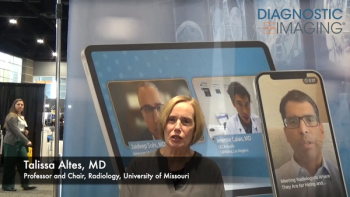
Mobile C-arm produces volumetric images from single pass
Canadian researchers, working with Siemens Medical Solutions, have enhanced a mobile C-arm x-ray system to provide real-time, submillimeter guidance during surgery. Upgrades allow the mobile C-arm to produce volumetric images in a single rotation around the patient.
Canadian researchers, working with Siemens Medical Solutions, have enhanced a mobile C-arm x-ray system to provide real-time, submillimeter guidance during surgery. Upgrades allow the mobile C-arm to produce volumetric images in a single rotation around the patient.
Clinical researchers at the University Health Network (UHN) have applied this capability in image-guided interventions, including head-and-neck surgery and spine, thoracic, breast, abdominal, and prostate interventions. Because of its mobility, the C-arm also provides a valuable 3D imaging technology well suited to emergency rooms and intensive care units, said the researchers. They reported their findings July 25 and 26 at the American Association of Physicists in Medicine meeting.
Trials are now under way in a broad spectrum of surgical and interventional procedures ranging from tumor ablation to orthopedic surgery and brachytherapy.
The conebeam-capable C-arm visualizes hard and soft tissue at a fraction of the dose administered during a typical diagnostic CT scan, according to the researchers. Image quality is less than what might be achieved with a high-end CT scanner, but it is good enough to guide surgeons to soft-tissue targets and around critical structures, the researchers report.
Conebeam CT on the modified Siemens PowerMobil uses a flat-panel detector to acquire a volume of data rather than slices. The isocentric C-arm maintains a fixed field-of-view as the C-arm gantry moves around the patient.
The current form of the system was developed by UHN physicist Dr. Jeffrey Siewerdsen along with Dr. Jonathan Irish, UHN chief of surgical oncology; Dr. Walter Kucharczyk, UHN head of neuroradiology; and Dr. Brian Wilson, UHN head of biophysics and bioimaging. Though it is ready for immediate use in clinical interventions, its potential extends much further, according to the research team.
The technology may be useful in the development of both advanced image analysis techniques, such as 3D deformable image registration, and advanced treatment delivery systems, including robot-assisted surgery and novel ablative therapies. The mobile C-arm also may provide a common ground for integrated treatment planning, guidance, and response assessment in surgery and radiotherpy.
Newsletter
Stay at the forefront of radiology with the Diagnostic Imaging newsletter, delivering the latest news, clinical insights, and imaging advancements for today’s radiologists.




























